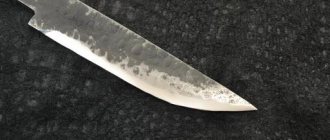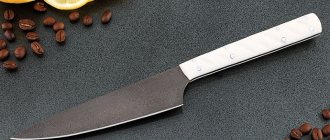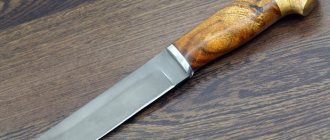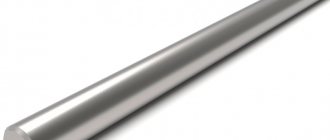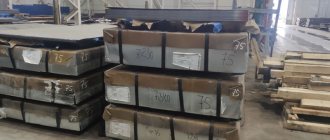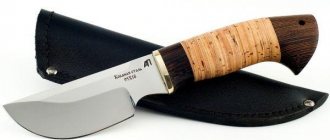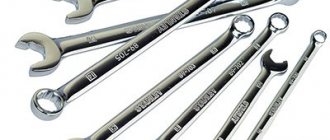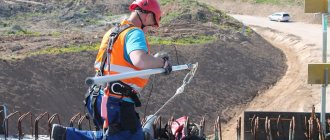- September 10, 2019
- Equipment
- Alexander Romanov
A knife is one of the very first, and therefore the most ancient, tools with which man began his journey. It has been and remains one of the most sought-after items throughout our history, regardless of era and culture. Serving not only its utilitarian functions, but also as a faithful companion and friend, sometimes even protecting our lives, the knife will probably never lose its relevance.
The first knives, of course, were made of stone or bone; then from bronze, and finally, with the development of ore processing, the era of first iron and then steel blades began. Throughout their existence, people have been looking for ways to somehow improve the functionality of their main handy tool, and of course, these researches concerned not only shapes and sizes, but, first of all, the material from which the blade was made.
What is it - steel? Which steel is better for a knife? Is all this talk about its brands, compositions and processing methods so important? How important is it to know all the pros and cons of steel for a knife? To find the answers, you need to start with the very basics.
Classification of knife steels
When we talk about a material such as steel, especially knife steel, we should understand that modern industry, along with traditional technologies, has generated a huge number of its types, which differ both in chemical composition and manufacturing technology. In order not to get lost in this diversity, we should highlight at least the basic concepts. So…
According to the chemical composition, steels are divided into carbon and alloyed:
- Carbon steel is an alloy of iron and coal, without the addition of any other elements. It is often called “black” or “rusting”. This is the oldest type of steel from which knives were made. Overall it is highly durable, takes and holds an edge well, and its only drawback is that it is extremely susceptible to corrosion.
- Alloy steel - what is often called "stainless steel" - is not always what it is. As a rule, such steel is much less susceptible to corrosion, but this does not mean that it is the best steel for a knife. Its main feature is that, in addition to carbon, the alloy with iron contains many other elements that can affect its characteristics in a variety of ways.
Based on the manufacturing technology of these alloys, quite a few types of steel can be distinguished. The following knives are suitable:
- Steel that is produced using modern industrial methods. This is its most common type, which is produced by melting and stamping.
- A separate type of industrial steel should be distinguished from the so-called “powder” steel, which is obtained not by melting and stamping, but by powder sintering of the smallest metal particles, which makes it possible to achieve characteristics that are not available for conventional industrial steels. Premium-segment knives are made from powder steel, the blades of which have particularly high strength, hardness and wear resistance.
- Steel that is produced by the traditional forging method. It is often called "forged" and is highly prized.
- Damascus, like its close relative - damask steel, is also a product of metal forging. They say that Damascus steel for a knife is one of the best, as well as damask steel, but their characteristics greatly depend on the skill of the blacksmith, and the manufacturing technology itself does not at all guarantee high quality. Damascus steel has a layered structure in which different types of metal alternate, and damask steel has a special, “star-shaped” pattern. Damascus steel knives themselves are very beautiful, but their properties will directly depend on the steels included in the layers.
Properties of powder steel
The powder steel manufacturing process comes down to the basic steps: production and mixing of powders, compaction and sintering. Manufacturers may have different process specifications.
Knives made of this steel are more expensive. The quality of the finished product depends on the size and distribution of the carbides formed. Using the technique allows manufacturers to obtain a high-tech alloy, increase the number of alloyed elements, and improve the characteristics of the material.
Most military and hunting knives are made using powder technology, because... in these cases, increased strength is required in combination with anti-corrosion properties.
Powdered steel blades are sharper than solid metal prototypes. Withstands temperature changes, is resistant to deformation, and can be sanded. The cutting edge retains its sharpness for a long time.
At home, powder steel requires careful sharpening.
Steel composition
Here we will look at the main elements that make up the metal from which blades are made. Below are the components that make up most alloy steels, in order of decreasing frequency of their use:
- Iron. The base that forms any alloy that will later be called steel. Its content in knife steel can reach 99.6%.
- Carbon. Basically just regular coal. It is he who sets its main characteristics: the ability to accept hardening, to crystallize into a solid substance capable of withstanding loads. The minimum percentage of carbon content to obtain this ability is 0.4%. The maximum percentage of carbon content in traditional steels is 2.13%.
- Chromium. In alloy steels it is the first and most basic additional element. It is thanks to it that steel acquires resistance to corrosion, which is why it is sometimes called “stainless”. Even a low chromium content (up to 1.5%) in the composition of carbon steels allows the metal not to rust deeply. In general, to acquire the properties of “stainless steel,” steel must contain at least 13% chromium, and the more carbon there is in the metal, the greater the percentage of chromium needed to ensure resistance to corrosion.
- Silicon. In a percentage of about 1-1.5%, it increases the strength of steel without affecting elasticity and toughness, but in large quantities it increases brittleness and makes the material unsuitable for making blades.
- Manganese. A useful element in the composition, whose content in an amount of more than 1% in the alloy increases both hardness and wear resistance, and even resistance to impact loads.
- Vanadium. Improves almost all useful properties of steel, making it harder, stronger and denser. Some expensive powdered knife steels can contain up to 10% vanadium, which provides them with unprecedented properties in maintaining the sharpness and strength of blades.
- Molybdenum. Improves the ductile properties of steel and also makes it less sensitive to heat.
- Tungsten. In nature, it is one of the hardest metals. Its content in steel adds hardness to it. Tungsten forms super-hard carbides in its composition, and also makes the steel insensitive to loss of hardening when heated. However, this element is rare and quite expensive, and there are few steels containing it.
- Nickel. An expensive and rare metal that increases both corrosion resistance and the overall strength of steel. Rarely used.
- Cobalt. Quite a useful element for knife steels. It slightly increases the heat resistance of steel, but most importantly, it increases resistance to impact loads, which is always useful for blades.
Handle
The material of the handle and how well it is made largely determines the comfort of using the device.
The handle can be cast, that is, it is a single unit with the tip. Such blades are expensive and heavy, but they last almost forever.
If overlays are used, it is important to pay attention to the length of the tail and rivet. It is better if the tail runs along the entire handle and is secured with three rivets. Let's assume the option is when the tail reaches the middle of the pads. If its size is smaller, then do not expect the knife to serve for a long time: most likely, it will simply fall off the handle.
The covers can be made of plastic or wood.
- Wooden ones look impressive, but over time they inevitably lose their attractiveness: they swell from water, crack, and darken.
- High-quality plastic is free from these disadvantages and can serve for years without changing its characteristics. Rubber inserts add comfort during operation - they prevent the knife from slipping out of your hand.
Check the strength of the fastening: there should be no gaps or cracks anywhere, the blade sits tightly in the covers, and the rivets are securely fixed.
Characteristics of knife steels
In order to properly navigate when choosing the best steel for a knife, first of all you need to properly understand the concepts that are used to describe its properties. There are several of them. It is their combination that determines the pros and cons of steel for knives:
- Hardness. In simple terms, it expresses the ability of steel to easily push (cut through) various materials without experiencing damage. The hardness of steel is expressed in Rockwell hardness units (HRc). For knife steel, the range of working hardness is usually from 52 to 61 units. For example, ordinary glass and a file have a hardness of 60 units. This is precisely what is associated with the method of approximate determination of the hardness of a blade: if a file is capable of leaving scratches on its surface, then its hardness is obviously below 60 units, and if the blade scratches glass, then it is higher.
- Strength. This is the ability of steel to withstand various loads. Using the knife as a lever, we test its strength. The higher it is, the greater the load the metal can withstand without residual damage. Modern powder steels are very durable due to their uniform internal structure and high composition density.
- Impact strength. This is the ability of steel to maintain its strength characteristics under impact load. Tough steel has virtually no chance of breaking when chopped or dropped on a hard surface. Many tool steels, such as X12 MF, or D2, do not have very good toughness, and although they are generally very strong, they are not worth using on chopping knives.
- Wear resistance. This concept characterizes how quickly metal wears out when in contact with abrasive surfaces. This indicator is closely related to the hardness of the steel and the density of its structure.
- Cutting edge durability. As the name suggests, it is the ability of a knife to hold its edge. The edge is the most vulnerable part of the blade, and only good steel can ensure long-term retention of all its cutting properties with a sharply sharpened blade.
- Corrosion resistance. This indicator determines the ability of the metal to maintain its chemical homogeneity when exposed to oxidizing agents or aggressive environments in which the blade can be used. Corrosion resistance is never absolute. Sometimes it is this that comes to the fore when choosing which steel for a knife will be optimal.
- Red fastness. This term is rarely found among the characteristics of knife steels, but sometimes understanding it is very important. In essence, red resistance is the heat resistance of the blade, that is, its ability not to change its crystal structure when exposed to high heat.
Application
Elmax gained its greatest popularity as a knife steel. Blades made from it have excellent cutting performance, long service life and resistance to rusting processes. But sharpening such blades is quite difficult.
Knives produced by the powder method with such high strength are not recommended for use as camp knives, since it will be extremely difficult to edit away from professional equipment.
But knifemaking is not the only industry in which Elmax is used; limiting such good steel to one production is not reasonable. Its excellent thermal and anti-corrosion qualities are used in parts of mechanisms that operate in aggressive environments and high temperatures, for example, turbine blades, bearing bushings, etc.
What knives are made from Elmax
Elmax steel knives are very popular among catering and food industry workers. Kitchen tools are easy to use, versatile and can last for a long time without sharpening.
Even despite the difficulty of editing, they are popular among fishermen and hunters. However, it is worth remembering that in the field it will not be possible to do anything with the cutting edge; the equipment must be prepared at home in advance. The Elmax knife is convenient, durable, versatile, it’s not for nothing that this brand has such success around the world.
Knife made of Elmax steel.
Domestic steels
Carbon:
- U8 (or U8A). Steel with a carbon content of about 0.8%. The simplest and most common in knife making, it is widely used in handicraft knife making. Highly durable, takes and holds an edge well. The letter “A” in its name means high-quality steel.
- U10 (or U10A). Similar to the previous one, but with a carbon content of about 1%. The strength is slightly lower, but the hardness and edge retention are better. Used in the manufacture of knives for heavy work, including army and combat.
- 65G. Carbon spring steel. Carbon content is about 0.65-0.7%. Unlike simple “carbon” steel, this steel is alloyed with manganese and contains a fraction of a percent of chromium, due to which it has excellent strength, toughness and elasticity, as well as a wide range of working hardness values. Knives made from this steel hold an edge well and are very durable. It does not rust as actively as “U” grade steel.
- ШХ15. Ball bearing steel. Alloyed with manganese and a small amount of chromium (1.5%). Carbon content is about 1%. It is one of the most balanced carbon steels: easy to sharpen, maintains high strength at high hardness, good wear resistance and is able to hold a cutting edge at small angles.
- ХВ5 (“Diamond” steel). Contains about 1.35% carbon and quite a lot of tungsten (about 5%). Quite strong, but at the same time with poor impact strength, steel that can break under dynamic loads. It is distinguished by colossal hardness (up to 68 HRc units) and wear resistance. Designed only for long and aggressive cutting, without transverse and impact loads. It rusts quite intensively.
- R6M5 (“quick cutter”). Steel used to make saws for metal. Contains about 0.8% carbon, 4% chromium, some vanadium and a large amount of tungsten (about 6%). Also doped with molybdenum. Quite an interesting steel, with enormous heat resistance, edge retention and wear resistance.
- 9ХС. Tool alloy steel. Carbon content - 1%. Chromium content - 1.2%. Additionally, the steel is alloyed with silicon and manganese. Small quantities contain nickel, vanadium and even tungsten (up to 0.25%). Thanks to a successful combination of elements, steel has outstanding characteristics in terms of sharpening retention, wear resistance and strength.
- X12MF. Tool alloy steel. It is often called "semi-stainless". It is one of the best steels for making knives. Contains 12% chromium and 1.5% carbon. It has a fairly rich composition of alloying elements - molybdenum, vanadium, manganese, nickel and phosphorus. It has excellent strength, wear resistance, excellent sharpening and impact strength at an acceptable level. One of the best choices in terms of price-quality ratio.
Stainless:
- 40Х13. Alloy steel of the lower price level. Contains 0.4% carbon and 13% chromium, as its name suggests. A stainless steel knife of this class will indeed almost never rust, but its edge retention is very mediocre.
- 65Х13. Of the inexpensive grades, this steel is a very good choice. Contains 0.65% carbon and the same 13% chromium. Due to this balancing of the composition, it is slightly more susceptible to corrosion than the previous one. But it holds an edge much better and is generally a very good steel, especially with good hardening.
- 95Х18. This steel, although still at an average price level, is already significantly higher in quality than the previous two. The amount of carbon is approaching 1%, and chromium in this alloy is already significantly higher - 18%, which increases both the corrosion resistance and the overall strength of the blades.
- 110X18 MSh-D. Very rare, but especially valued steel among craftsmen. It is distinguished by the highest level of purity, thanks to the electroslag remelting technique. Contains up to 1.1% carbon and about 19% chromium. Retains sharpening for a long time and shows high strength due to its uniform structure.
- 40Х10С2М (EI-107). It is also called “valve” steel. Despite the low coal content (0.4%), this steel is a very good choice. It contains a little chromium (about 10%), but it is additionally alloyed with silicon (about 2.5%), manganese and molybdenum, which has the most positive effect on its strength and wear resistance.
Reviews
Among connoisseurs, knives made from Elmax steel enjoy considerable success, as evidenced by numerous positive messages on the forums. Here is one review that is neutral, honest, and confirms the data provided in the article:
Anatoly, Sevastopol, 24 years old: “I ordered a knife from Elmax from a very well-known and popular manufacturer here. It lay on the shelf for some time. And now there was a chance to test it in action. Initial sharpening, shaves - not very confidently, but scratches the window glass. Every day, for a week, I cut up a couple of pikes and put them in their sheaths. Every day I discovered several rusty spots up to 2mm on it, which, with some difficulty, were removed without a trace. As it turned out later, it is not completely stainless and needs to be wiped dry all the time!”
Another positive review.
Andrey, Kirov, 32 years old: “I am interested in tourism, fishing and hunting. I have 5 different models of knives from ELMAX. I used only one more or less seriously. I didn’t butcher any boar elk, just regular EDC tasks. No comments, holds an edge. In general, excellent material from a quality manufacturer. If properly sharpened and cared for, it will last one year. One thing is depressing – the price.”
Previous
KnivesKnife Viking Nordway 440 Steel K781 Vostok – review and its varieties
Next
KnivesSteel U10A-7HNM
Foreign steels
Carbon:
- 1070. Simple carbon steel, analogue of our U8A. It is also used for the manufacture of large blades with chopping characteristics. Production - USA.
- 1095. Analogue of U10A steel. Often found on US Marine Corps KA-BAR military knives.
- SK-5. Additionally alloyed with manganese, silicon (up to 0.5%), nickel (0.25%) and chromium (about 1%). Thanks to these additives, the steel becomes significantly stronger and more resistant to corrosion while maintaining the same edge retention characteristics. Used by the American company Cold Steel.
- D2. European analogue of our steel X12MF. It is distinguished by a slightly higher degree of purification and lower tolerances for the content of alloying elements.
Stainless:
- 420. Cheapest alloy steel. Similar to our steel 40X13, except that it contains not 13, but 18% chromium, due to which it can be hardened to a slightly higher hardness and has slightly better strength. Production - USA.
- 440A. Steel approaching the composition of our 65X13, with the exception of chromium content (18%). Good steel in the mid-price segment, with proper hardening it holds the cutting edge very well, is very durable, is not afraid of shock loads, and is practically not subject to corrosion.
- 440B. A steel similar in composition to 95X18 steel, but its carbon content is slightly lower - about 0.8%. Quite a rare steel, since it is not much superior to the previous one in edge retention, but costs a little more.
- 440C. In the last century, it occupied a niche in the premium segment of knife steels, before the advent of powder metal conversion technology. Similar to our steel 110X18 MSh-D. It holds an edge perfectly, is very durable and has good impact strength.
- 154CM. Another American steel, especially pure, produced initially for gas turbine blades. It has shown excellent properties in the production of knives. Carbon - 1.1%, chromium - 14%, additionally alloyed with molybdenum (4%).
- AUS-6. Japanese steel, an approximate analogue of our steel 65X13, but with a slightly higher degree of purification. Nowadays it is used quite rarely, giving way to the next generation.
- AUS-8 (AUS-8A). Steel with a carbon content of about 0.85%, 13% chromium and additionally alloyed with silicon, molybdenum and vanadium. It is a very high quality, albeit rather old, steel. It takes sharpening well, holds it well, is very durable and at the same time elastic, with good impact strength.
- ATS34. The Japanese equivalent of 154CM steel, with slightly larger tolerances and a less thorough degree of cleaning.
- 8Cr13MoV. Chinese steel, a close analogue of AUS-8. Inexpensive and high-quality steel subject to good heat treatment.
- 8Cr14MoV. A slightly stronger and corrosion-resistant version of the previous steel. Slightly more sticky and holds an edge better. More similar to AUS-8A.
- 9Cr18MoV. The Chinese analogue of 95X18 steel, or a more budget version of 440C steel - you can say both. Inexpensive, but very high quality material for blades.
Powder:
- Elmax. Swedish steel, sometimes called “440C on steroids.” Carbon - 1.72%, chromium - 17.8%, molybdenum - 0.99%, vanadium - 2.99%. Excellent edge retention, high ductility and, of course, wear resistance.
- M390. German steel from the Bohler-Uddeholm concern. The next step in “pumping” steel is 440C. Carbon - 1.9%, chromium - 20%, molybdenum - 1%, vanadium - 4%. Tungsten already appears here - 0.6%. The steel is even stronger and more wear-resistant, and thanks to tungsten, it is quite red-resistant, with excellent cutting edge retention.
- ZDP189. Japanese steel. One of the first to be produced using the powder method. Contains 3% carbon, 20% chromium, 1% molybdenum and 0.3% vanadium. The steel is incredibly hard, with impressive strength indicators.
- CPM S30V. One of the most popular powder steels for knives. Developed by knifemaker Chris Reeve in collaboration with Crucible. 1.45% carbon, 14% chromium, 2% molybdenum and 4% vanadium. It is believed that this steel is almost twice as superior to 440C steel in cutting edge retention, and four times superior in strength.
- CPM S35VN. Further development of the previous steel. There is a little less vanadium in it, but a rare metal is added - niobium. This is a very refractory substance that increases the characteristics of steel many times over. This steel is considered one of the best for knife blades at the moment.
- CTS-XHP. Very balanced steel from Carpenter. It has all the durability characteristics expected of “powders”, surpassing even S30V. Contains carbon - 1.6%, chromium - 16%, molybdenum - 0.8%, vanadium - 0.5%, and is also alloyed with manganese and nickel (about 0.5%).
- Vanadis10. Another steel from the Bohler-Uddeholm concern. Particularly strong and hard steel with a reduced chromium content (7.8%), but an increased content of carbon (2.95%), vanadium (10%) and tungsten (0.3%). Also contains 1.5% molybdenum. It has fantastic edge retention, toughness and good toughness, but does not resist corrosion very well.
Rating of the TOP 10 best steel brands for knives for 2022
This ranking table contains the best steel grades according to experts and users.
| Place | Name | Price |
| TOP 10 best steel grades for knives by price/quality for 2022 | ||
| 1 | D2 | Find out the price |
| 2 | Sandvik 12C27 | Find out the price |
| 3 | M390 | Find out the price |
| 4 | Elmax | Find out the price |
| 5 | 440C | Find out the price |
| 6 | VG-10 | Find out the price |
| 7 | CPM-S30V | Find out the price |
| 8 | AUS-8A | Find out the price |
| 9 | 95Х18 | Find out the price |
| 10 | 1.4116 | Find out the price |
Steel for kitchen knives
This is probably the largest group in existence. Professional chefs use many knives in one kitchen, each for a narrow range of tasks, and sometimes place the highest demands on them. The blades of such products are made from the hardest alloy steels, such as Japanese VG-10, ATS-34, or powder M390, Elmax and the like.
The other extreme in the kitchen is the so-called “butcher” and boning knives made of stainless steel, which, as a rule, is quite soft, can be easily adjusted on any grinder and dulls quickly enough, but does not rust at all and does not require any maintenance. For such knives, steels of type 40X13 or 420 are used, from the lower price segment.
Which brand should you choose?
The choice of steel grade depends on the purpose of the knife.
For a kitchen knife, the best brands are those that are used in the manufacture of surgical instruments - VG-10, AUS-8 or 40X13. For a hunting knife, the best steel today is S390, a more budget option is X12MF. For a utility knife, the optimal choice would be S30V, S35VN or D2/X12MF.
For those who do not want to devote a lot of time to caring for the knife, it is better to buy 65X13, but it requires frequent editing. If the knife is intended exclusively for cutting, the ZDP-189 is a good and affordable option.
Steel for hunting knives
In this group we will look at chopping and skinning knives. They are not distinguished by a long blade length, and the steel for such knives must have not only high cutting edge durability, but also sufficient strength, since when hunting when cutting an animal, the blade can experience stress both from breaking and endure blows, not only from bones, but also to experience accidental falls, for example onto rocks. The best choice for these knives would be either carbon steel, such as U8, ShKh-15, or alloy steel of the mid-price segment, for example, 95Х18, Х12МФ, and for demanding hunters - powder steel S35VN, RWL-34 and the like.
Sharpening features
As has already been mentioned many times, sharpening on your own, without experience and without proper equipment, is not easy. This means high-quality sharpening, when the correct angle is maintained and the surface shines like a mirror. But you can scratch the blade with a stone, but the result will be zero.
If you have the necessary skills and desire to sharpen your knife yourself, you will need a minimum set of abrasive stones. The best way to sharpen the cutting edge is with Japanese water stones, aluminum oxide abrasives and 100/80 and 50/40 grit diamond stones.
You need to work according to the standard scheme: first, coarse grain, maintaining the same angle, and then gradually reducing it and final polishing with a special paste.
Steel for tourist and camping knives
This group includes a huge number of types and sizes of knives, since for every traveler, tourist or just someone who likes to wander through the forest, such a knife will be different. Very often, choosing a knife to take with you to the forest or on a hike is interspersed with hunting functions, and determining the choice of steel for such a variety of tasks can sometimes be difficult. The steel should be moderately hard so that it is fairly easy to sharpen and straighten, but at the same time keep its edge as long as possible. It should also have good impact strength. All these requirements, oddly enough, are satisfied by ordinary carbon steel: 65G, ShKh-15 or the simplest U8, U10. According to some reviews, such steels are the best choice for working knives.
Steel for urban and folding knives
Urban knives most often have a fairly short blade and are small in size so that they can be carried with you without attracting the attention of others. These include both small fixed-blade and folding knives. It is when working in urban conditions that premium-class powder steels fully reveal themselves. This is where such “powders” as S35VN, CTS-XHP, Elmax, M390, Vanadis 10 and many others find themselves. High hardness, highest abrasion resistance, long-lasting edge retention and incredible corrosion resistance - all this is combined in modern powdered knife steels.
Manufacturer
Japanese companies hold the undisputed first place in the world among manufacturers. Their centuries-old traditions and secrets of craftsmanship allow them to remain at the top even in the 21st century. There are companies that produce elite products with dizzying prices, as well as fairly affordable brands with excellent product quality. You can name such companies as: Samura, Global, Misono, Tojiro, Kasumi, Hattori, Masahiro.
German blades are slightly less popular. Like all goods from Germany, they are distinguished by high quality, but the price cannot be called low. Popular brands: Wusthof Dreizack, Zwilling JA Henckels, Dick, Fissler.
There are also worthy brands among other European companies: Victorinox (Switzerland), Sabatier and Tarrerias Bonjean (France), Arcos (Spain), Del Ben (Italy), Tescoma (Czech Republic).
It is impossible not to mention private workshops that can make a knife according to your requests. Such an instrument will fit perfectly in your hand, will have precise balancing and will serve for many years. But an item made according to individual sketches will be very expensive. An example is the workshop of G.K. Prokopenkov or the forge of the Kasatkin brothers.
Steel for tactical and combat knives
Modern marketing offers a huge number of knives for both the military and people who are simply interested in this topic. If we reduce all these knives to a single denominator, then these are tools that are designed for heavy work and must withstand heavy loads. The steel from which they are made is very diverse and includes both cheap samples (440A and the like) and the most expensive powder steels (like the same S35VN or M4).
How justified the use of “powders” is in this case is a controversial issue. According to reviews, the most suitable steel for knives with characteristics and indicators of this level is carbon, since it has the maximum range of useful characteristics at the lowest price. And since the use of such a knife implies the most stringent conditions, the issue of price is very important. Therefore, steel samples such as 65G or U10 will probably be the best choice.
Sandvik 12C27 analogues can be used
Among the alloys used for the manufacture of various knives, those similar in composition or analogues of 12C27 are used. Among them is the Russian analogue - 65X13.
Knives made of 65X13 are recognized as one of the most convenient and practical to use, durable, with excellent anti-corrosion properties. Cutting tools made of 65X13 are easy to sharpen and perform a wide range of tasks. You can verify this by purchasing one of the knives made of 65X13 steel from Ali Askerov’s online store Caucasus Souvenir.
12C27 on the world market is considered one of the lowest levels of steel for a branded knife, which can be used for serious work, along with the American 440A and Japanese AUS-6. At the same time, it makes a tactical as well as an excellent cutting tool for home and professional kitchens.

